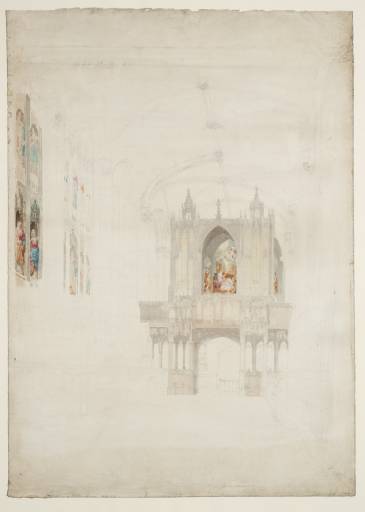Exhibition history
References
How to cite
Andrew Wilton, ‘Oxford: The Interior of New College Chapel, Looking through the Organ Screen towards Reynolds’s West Window c.1798–1800 by Joseph Mallord William Turner’, catalogue entry, March 2013, in David Blayney Brown (ed.), J.M.W. Turner: Sketchbooks, Drawings and Watercolours, Tate Research Publication, April 2015, https://www

